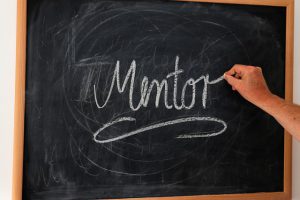This article in Inside Higher Ed focuses on the positive and significant impact that a faculty member can have on a student. We all know this, don’t we? We all had faculty mentors who made a difference for us on our higher ed journeys.
I can still name some of my faculty mentors: Harold Sare, Danny Adkison, Franz von Sauer, Bruce Buchanan. (And yes, all my faculty mentors were male. That was life in political science when I was in college.) Can you name yours? I bet you can.
 We are launching a faculty mentoring program here. I wrote about it in an earlier post, so this is the second verse of the faculty mentoring song. The administrative rule and guidelines describe our vision for faculty mentoring. As you can see, when we drafted the rule we were calling it faculty advising. But really, it’s a mentoring role. This edition of Academic Transfer in Focus is a chat with the two faculty leaders of this effort. We have posted seven Instructional Associate (IA) positions for our launch of mentoring. We will hire seven adjunct faculty as IAs who will work 20 hours a week with their assigned caseload (approximately 330 students), developing the relationships that are the essence of mentoring. We will have four faculty mentors in the Liberal Arts, two in SEM (Science, Engineering, & Math) and one in Business. It’s a small start with big goals:
We are launching a faculty mentoring program here. I wrote about it in an earlier post, so this is the second verse of the faculty mentoring song. The administrative rule and guidelines describe our vision for faculty mentoring. As you can see, when we drafted the rule we were calling it faculty advising. But really, it’s a mentoring role. This edition of Academic Transfer in Focus is a chat with the two faculty leaders of this effort. We have posted seven Instructional Associate (IA) positions for our launch of mentoring. We will hire seven adjunct faculty as IAs who will work 20 hours a week with their assigned caseload (approximately 330 students), developing the relationships that are the essence of mentoring. We will have four faculty mentors in the Liberal Arts, two in SEM (Science, Engineering, & Math) and one in Business. It’s a small start with big goals:
- help students complete their program of study
- help students transition to a four-year program and/or to employment in their field
- support persistence and retention
- build relationships across instruction and student services and with declared majors in transfer programs
- develop learning communities around shared interests
- support engagement and connections for both the faculty mentors and the students being mentored
All of those goals should sound familiar. Our strategic plan revolves around equity and access, persistence and engagement, completion and transition. The higher education strategic plan for the State of Texas (60x30TX) supports increased completion of a postsecondary award, with documented marketable skills embedded in every program. The world has changed and a postsecondary credential is the key to a good life, a thriving community, and an engaged polity.
Community colleges are key to the state’s strategic plan. Faculty mentoring is a big piece of the persistence and completion puzzle here at ACC. As we roll out this initial effort, we invite you to think about how you can mentor students and make a difference. As Adam Weinberg says in his article in Inside Higher Ed, mentors can help students become “the architects of their lives”. That is a worthy goal we can all support.
Image by geralt on Pixabay
